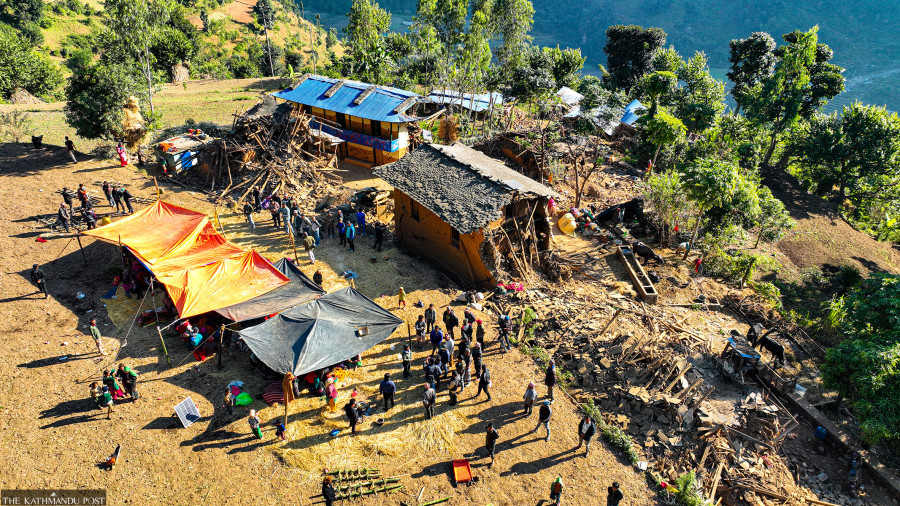Health
Diarrhoeal outbreak risk rises as mercury ticks up in quake-hit districts
Doctors in Jajarkot and Rukum West say cases of fever and diarrhoeal infection have started to rise in health facilities.
Arjun Poudel
Around a month and a half ago, a teacher and two of his students from Nalgad Municipality of Jajarkot district suddenly fell ill with diarrhoeal symptoms and were rushed to the municipal hospital.
Culture of stool specimens of the infected patients carried out in the hospital’s laboratory showed cholera infection.
“We sent stool samples to the National Public Health Laboratory in Kathmandu, for further confirmation, but the result came back negative,” Tapta Chunara, a public health inspector deployed by the District Health Service Office, told the Post over the phone from Jajarkot. “What worries us more is that the temperature has started to rise and water and sanitation conditions have been compromised due to the devastation caused by the earthquake.”
At least 154 people died, hundreds were injured and thousands were displaced by the magnitude 6.4 earthquake that rocked Jajarkot and Rukum West of Karnali Province on November 3 last year.
Multiple officials the Post interviewed said preventing possible outbreaks of communicable diseases—water-borne and vector-borne—is the main challenge in the areas, as thousands of people have been living in makeshift shelters for over four months now.
Diarrhoea is a common and seasonal public health issue usually triggered by food and water safety or hygiene issues. The disease has been associated with higher temperatures and is one of Nepal’s leading causes of morbidity and mortality.
“Health facilities in the district have started witnessing an uptick in the number of diarrheal and fever cases,” said Krishna Bahadur Khatri, information officer at the Health Service Office in Jajarkot. “We held a rapid response team’s meeting on Thursday and alerted health workers on the possible risks.”
Jajarkot witnessed its worst diarrhoeal outbreak in 2009, in which 111 people died and over 6,000 were infected. In 2016 too, an outbreak of cholera was recorded in the same district.
Officials at the Ministry of Health and Population concede that the risk of outbreaks of waterborne and vector-borne diseases in the two quake-affected districts is higher compared to other places. Thousands of people in the districts lived or are living in makeshift shelters for months in improper hygienic conditions.
Experts say the risk of communicable diseases increases due to easy contamination of food and water sources and temperatures favourable for the spread of bacteria causing diarrhoea.
“We are in constant touch with officials from the provincial health ministry, districts and the local level and alerted them to the risk of an outbreak of waterborne or vector-borne diseases,” said Dr Prakash Budhathoki, spokesperson for the health ministry in Kathmandu. “Several measures including conducting awareness drives on the risks, disease surveillance, and maintaining a stock of medicines, among other necessary arrangements, have been stepped up in the affected areas.”
Along with houses, toilets were also destroyed in the earthquake. Experts say the destruction of toilets increases open defecation, which risks contamination of water sources. The risk of vector-borne diseases—malaria, dengue, kala-azar and scrub typhus, among others—spreading could escalate in the coming days, according to experts.
“We are aware of the risk and have alerted the agencies concerned,” said Budhathoki.
“Ensuring safe drinking water, and maintaining hygiene and sanitation conditions will be crucial in the coming days. We have alerted the agencies concerned accordingly.”




 18.12°C Kathmandu
18.12°C Kathmandu













%20(1).jpg&w=300&height=200)
